On a journey filled with the warmth of the Spanish sun and the welcoming embrace of its people, I was introduced to a dish that epitomizes the soul of Spain: Paella. This iconic meal, with its origins steeped in history and tradition, captures the essence of Spanish cuisine through its use of vibrant paella rice and an abundant medley of seafoods. The rich hues of the rice, combined with the fresh, briny flavors of the sea, create a culinary tapestry that is as visually stunning as it is delicious.
Driving my curiosity, I embarked on a quest to master the art of cooking paella, delving deep into the traditions that have shaped its preparation. Through trial and success, I learned the importance of using authentic paella rice, which absorbs all the savory goodness of the broth, and the careful selection and preparation of seafood to ensure each ingredient shines.
Now, it brings me immense joy to share this recipe with you. Whether it’s your first foray into Spanish cooking or you’re looking to recreate cherished memories of your travels, this paella promises to transport you to the bustling streets and serene shores of Spain, offering a taste of its rich culture and spirited life. Let us embark on this flavorful journey together, where each spoonful is a celebration of Spain’s culinary heritage.
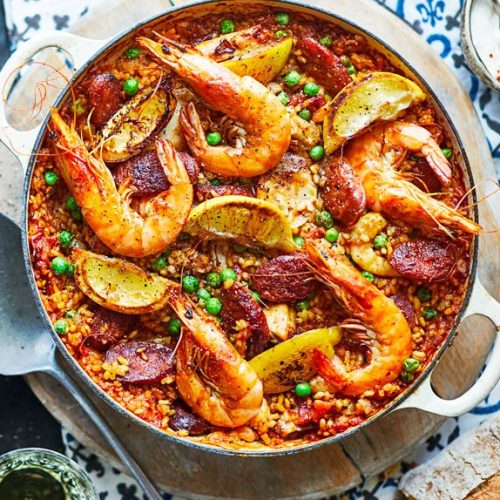
Paella
Equipment
- 1 deep-pan
- 1 stick blender
Ingredients
- 1 lemon
- Smoked sea salt optional
- 250 g paella rice
- 100 g frozen broad beans
- 1 medium squid
- 2 ripe tomatoes
- 3 tablespoon olive oil
- 1 onion
- 3 garlic cloves
- 10 large raw prawns
- Pinch of saffron strands
- 150 g cooking chorizo
- Small bunch of parsley
- 500 g mussels
- 100 ml dry sherry
Instructions
- In a broad, deep-pan, heat 1⁄2 teaspoon of the oil.
- Seasoning the prawn shells and parsley stems till they turn pink, then smash with a stick blender.
- Remove the pan from the oven and add the remaining olive oil.
- Simmer the onion and garlic until softened, then adding the chorizo and cook until it loses its oil.
- Cook for a minute after adding the tomatoes.
- Cook for five minutes, rotating the prawn tails until they are cooked through, tucking them into the rice.
- Turn the heat down when the rice is almost done.
- Stir everything together one more, then serve right now with chopped parsley on the side.
Cooking tips about Paella
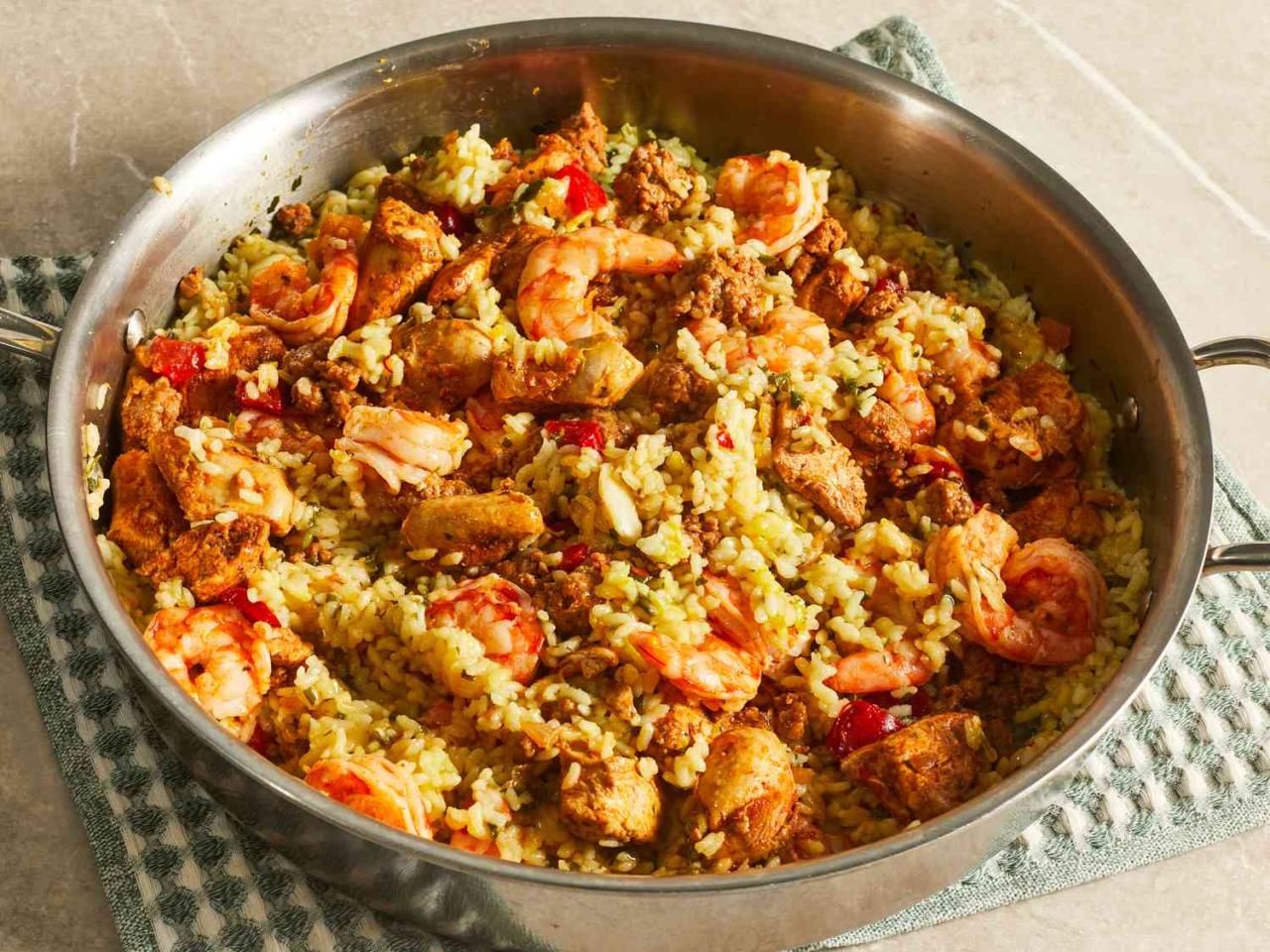
- Use the Right Rice: The soul of Paella lies in its rice. Short-grain varieties like Bomba or Calasparra absorb liquid well and maintain their firmness during cooking. These types of rice excel at soaking up flavors without becoming mushy.
- Choosing Your Pan: Traditional Paella is cooked in a shallow, wide pan called a “paellera.” The breadth of the pan allows rice to spread thinly and cook evenly, preventing soggy results. If you don’t have a paellera, any wide, shallow skillet will suffice, but avoid deep pans.
- The Importance of Sofrito: A good Paella starts with creating a flavorful sofrito base. This consists of sautéing onions, garlic, and tomatoes (and sometimes peppers) down into a rich, concentrated paste. It’s this foundation that imbues the rice with its initial layer of flavor.
- Saffron is Key: Saffron, with its distinctive aroma and color, is non-negotiable for an authentic Paella. It gives the dish its signature yellow hue and a complex flavor base. Invest in high-quality saffron threads for the best results, letting them steep in warm water to release their essence before adding to the rice.
- No Stirring After Adding Liquid: Unlike risotto, Paella is not stirred once the stock is added. Stirring prevents the formation of the coveted “socarrat,” the crispy rice crust that forms at the bottom of the pan, which many consider the hallmark of a great Paella.
- Stock Matters: The choice of stock is pivotal; it should complement your choice of proteins. A well-seasoned, homemade stock can elevate your Paella by infusing additional depth and flavor into the rice.
- Control Your Heat: Start on a high flame to simmer the stock and then reduce it to a medium-low flame to allow the rice to cook evenly. This gradual decrease in heat helps to avoid undercooked rice on top and burnt rice at the bottom.
- Choose Your Ingredients Wisely: Traditional Valencia Paella features rabbit, chicken, green beans, and white beans. Seafood and mixed Paellas followed suit. Choose fresh and high-quality ingredients to stay true to the dish’s roots or to make it your own.
- Let it Rest: Once off the heat, cover your paella with a clean cloth and let it rest for a few minutes. This step helps to even out the moisture levels throughout the dish, perfecting its texture.
- Garnish and Serve with Lemon Wedges: Serving Paella with lemon wedges is traditional; the citrus notes brighten up the rich and savory flavors of the dish, offering a refreshing contrast.
Serving suggestions about Paella
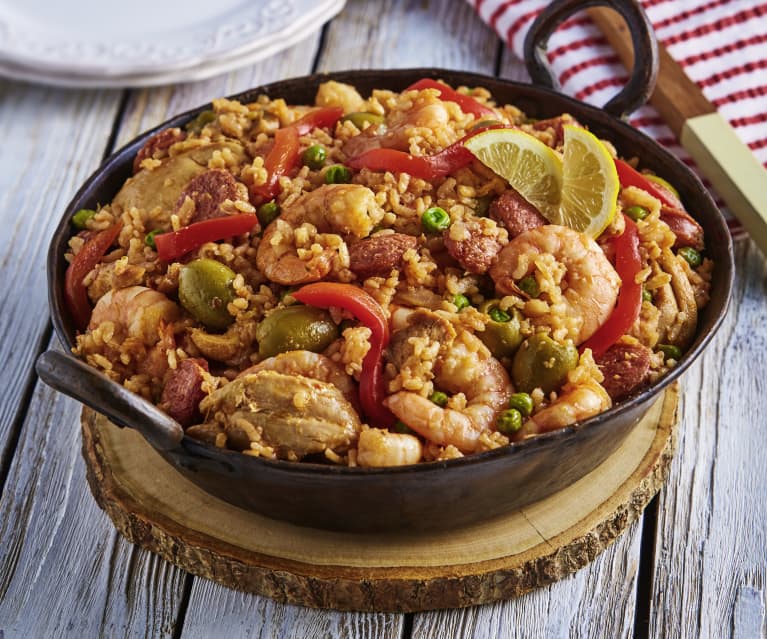
- In a Traditional Paellera: Serve Paella in its cooking vessel, a traditional paellera. This not only adds authenticity to your presentation but also helps retain the warmth of the dish as people gather around to share. The sight of a paellera brimming with colorful rice, seafood, and vegetables is instantly inviting.
- Family-Style Dining: Embrace the spirit of Spanish dining by serving Paella family-style. Place the paellera in the center of the table, encouraging guests to help themselves. This communal way of serving fosters a warm, convivial atmosphere reminiscent of Spanish celebrations.
- Garnished with Fresh Lemon Wedges: Brighten up your Paella before serving by garnishing it with fresh lemon wedges. The citrus notes not only add a beautiful contrast to the rich flavors but also allow guests to adjust the acidity to their taste, enhancing the overall dining experience.
- Paired with Spanish Wines: Elevate your Paella serving by pairing it with a selection of Spanish wines. A crisp white wine, such as an Albariño, can complement seafood paellas, while a light-bodied Tempranillo pairs nicely with chicken and rabbit versions. The right wine pairing can accentuate the flavors of the Paella and complete the Spanish culinary journey.
- With a Side of Alioli: Offer a small bowl of alioli (garlic mayo) on the side. This traditional Catalan sauce can be a delightful addition for guests to spoon over their servings, adding a creamy texture and a punch of garlicky flavor that marries well with the ingredients of the Paella.
- Rustic Table Setting: Enhance the ambiance by choosing rustic table decor that complements the earthiness of the Paella. Use wooden chargers, terracotta plates, and linen napkins to create a setting that transports your guests to the sun-drenched Spanish countryside.
Top 5 FAQs about Paella
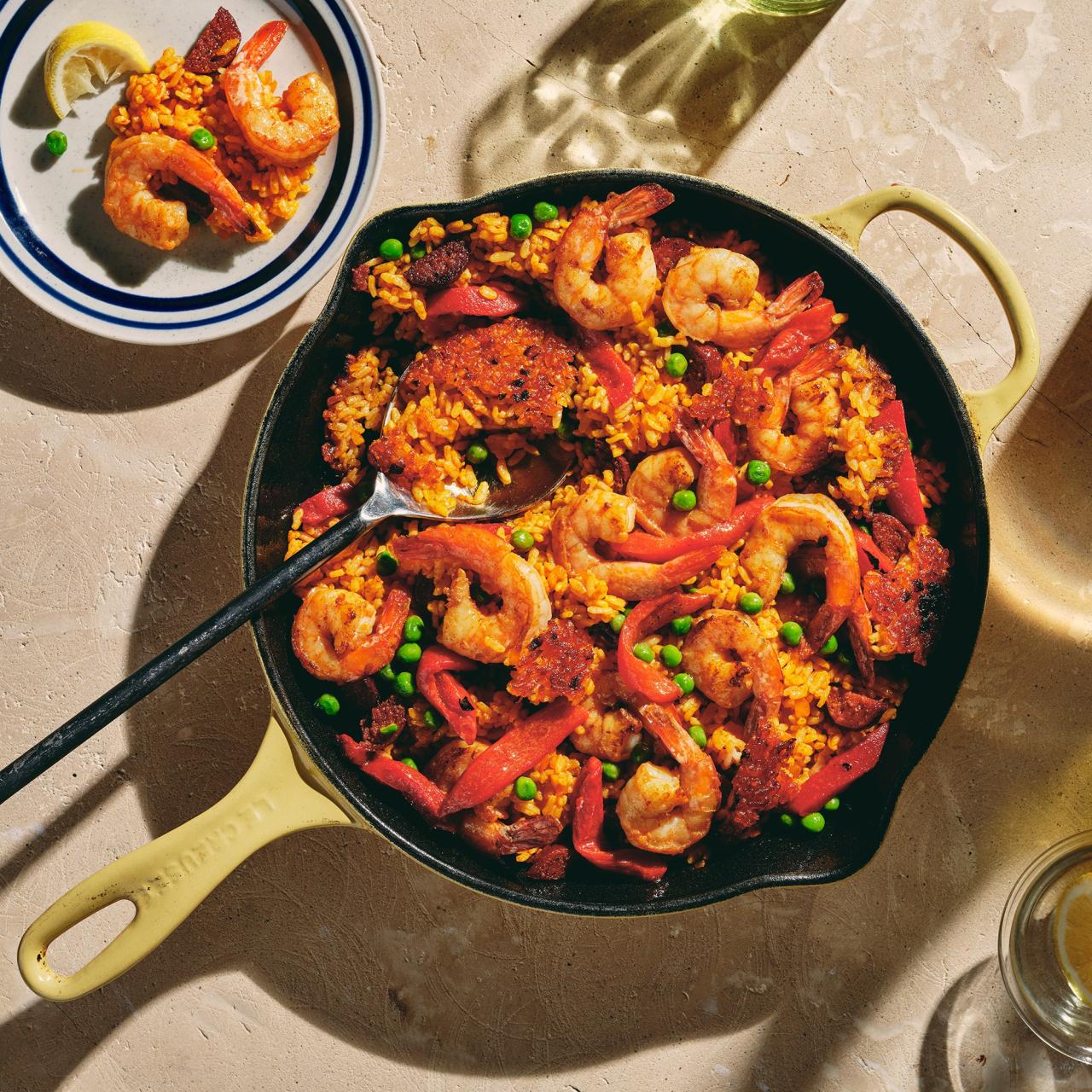
- What is the best rice to use for Paella? The best rice varieties for making Paella are short-grain types that are good at absorbing liquid while maintaining their texture. Bomba or Calasparra rice are ideal choices as they excel in soaking up the flavors without becoming mushy, hence embodying the soul of Paella.
- Can I make Paella without a traditional paellera? Yes, you can still make Paella without a traditional paellera by using any wide, shallow skillet you have on hand. The key is to ensure the pan allows the rice to spread thinly and cook evenly. However, avoid deep pans as they won’t provide the desired traditional texture and may cause the rice to cook unevenly.
- What ingredients are essential for an authentic Paella? An authentic Paella centers around paella rice, high-quality saffron for its distinctive color and flavor, and a variety of proteins – traditionally rabbit, chicken, green beans, white beans in Valencia Paella, or a variety of seafoods in seafood Paella. A flavorful sofrito base, made from onions, garlic, and tomatoes, is also crucial.
- How do I achieve the ‘socarrat’ in Paella? To achieve the coveted ‘socarrat’, the crispy crust at the bottom of the pan, do not stir the Paella once you’ve added the stock. Cook it over a low enough heat to allow the rice at the bottom to caramelize without burning. The key is managing the flame – start high to simmer the stock then reduce to medium-low, allowing the bottom layer of rice to toast to perfection.
- Is stirring required when cooking Paella? Contrary to dishes like risotto, Paella should not be stirred after adding the liquid. Stirring inhibits the formation of socarrat and can make the rice mushy. After adding your stock and arranging the ingredients, let the Paella cook undisturbed to perfect the texture and develop the complex layers of flavor.
As we close the chapter on our culinary journey with Paella, it becomes clear that this dish is not only a feast for the senses but also a heartfelt ode to Spanish culture and tradition. Through each grain of rice, each piece of seafood, and every vibrant splash of saffron, we’re invited to immerse ourselves in the bustling markets of Valencia, the festive streets during Spanish celebrations, and the quiet, sun-drenched afternoons where the essence of Spain is savored in every bite.
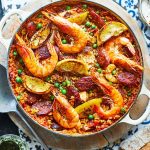
Leave a Reply